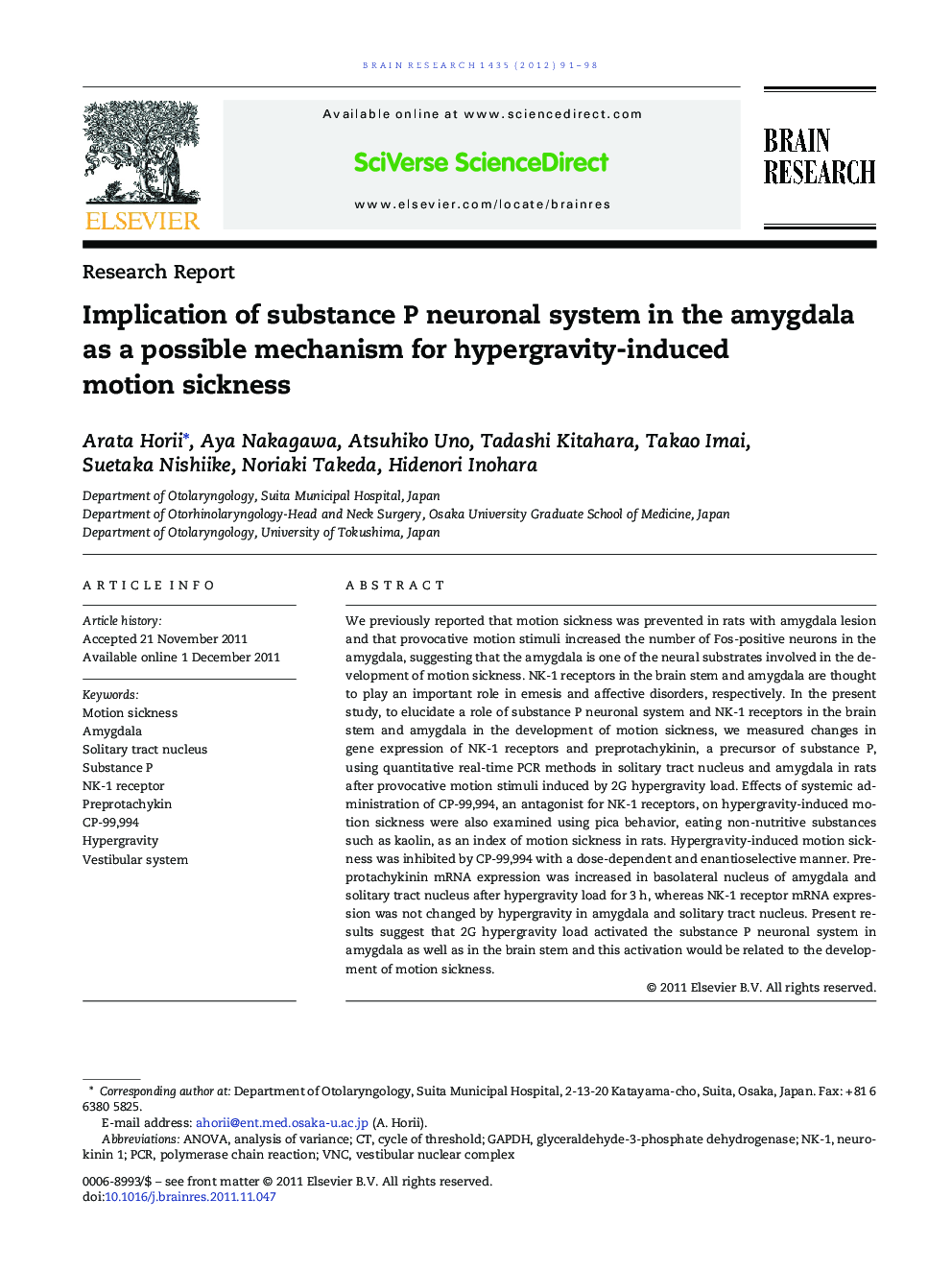| Article ID | Journal | Published Year | Pages | File Type |
|---|---|---|---|---|
| 4325465 | Brain Research | 2012 | 8 Pages |
We previously reported that motion sickness was prevented in rats with amygdala lesion and that provocative motion stimuli increased the number of Fos-positive neurons in the amygdala, suggesting that the amygdala is one of the neural substrates involved in the development of motion sickness. NK-1 receptors in the brain stem and amygdala are thought to play an important role in emesis and affective disorders, respectively. In the present study, to elucidate a role of substance P neuronal system and NK-1 receptors in the brain stem and amygdala in the development of motion sickness, we measured changes in gene expression of NK-1 receptors and preprotachykinin, a precursor of substance P, using quantitative real-time PCR methods in solitary tract nucleus and amygdala in rats after provocative motion stimuli induced by 2G hypergravity load. Effects of systemic administration of CP-99,994, an antagonist for NK-1 receptors, on hypergravity-induced motion sickness were also examined using pica behavior, eating non-nutritive substances such as kaolin, as an index of motion sickness in rats. Hypergravity-induced motion sickness was inhibited by CP-99,994 with a dose-dependent and enantioselective manner. Preprotachykinin mRNA expression was increased in basolateral nucleus of amygdala and solitary tract nucleus after hypergravity load for 3 h, whereas NK-1 receptor mRNA expression was not changed by hypergravity in amygdala and solitary tract nucleus. Present results suggest that 2G hypergravity load activated the substance P neuronal system in amygdala as well as in the brain stem and this activation would be related to the development of motion sickness.
► NK-1 antagonist suppressed motion sickness in rats with enantioselective manner. ► Preprotachykinin mRNA expression was increased in amygdala after hypergravity load. ► Substance P neuronal system in amygdala plays an important role in motion sickness.
